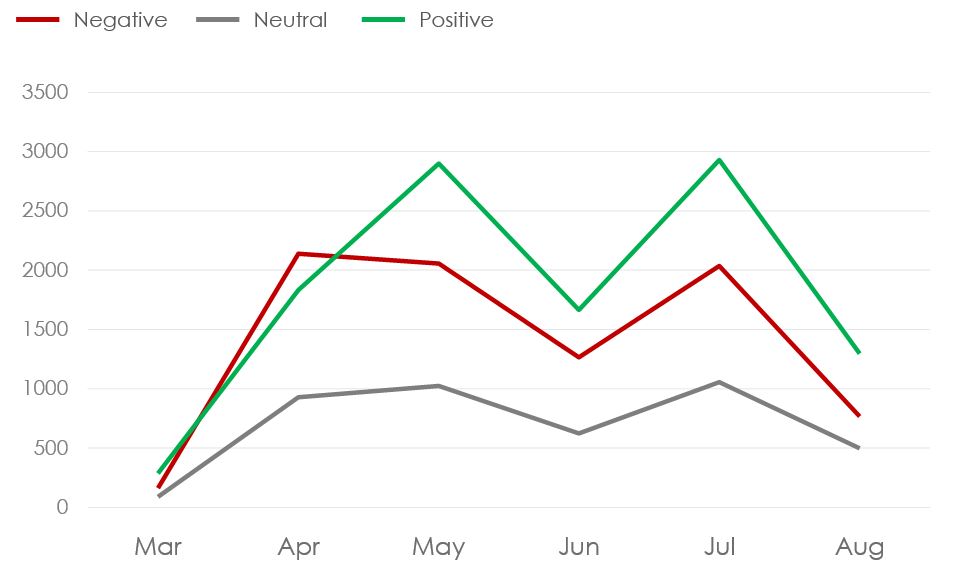Appendix D – media analysis results
Ipsos conducted a media analysis for OWRAC. The analysis suggested that traditional media stories were by far most prominent in April, when the committee was formed, and were focused primarily on paid sick leave, a topic that died down considerably over the summer.
Volume of coverage and sentiment

Source: March to August 2021, Ipsos RAD Team
Traditional news articles were split evenly between positive and negative (37 per cent each), with about 24 per cent classified as neutral.
Ipsos’ media scan found the future of work was a prominent topic of conversation on social media, especially in the spring, as Ontario began to emerge from COVID‑19. We found that much of the discussion was positive, as social media commentators expressed optimism about how the new, post-pandemic work world could be organized. The freedom to work from anywhere and the emergence of a hybrid model of working part time at home and part time at an office was seen by many on social media as an opportunity for a new way of working. Social media posts were most prominent in May and July and were 45 per cent positive, compared with 37 per cent negative and 17 per cent neutral.
| Month | Negative | Neutral | Positive | Total |
|---|---|---|---|---|
| March | 84 | 40 | 192 | 316 |
| April | 2,254 | 887 | 1,849 | 4,990 |
| May | 2,332 | 1,114 | 3,052 | 6,498 |
| June | 1,267 | 621 | 1,716 | 3,604 |
| July | 2,253 | 1,129 | 3,003 | 6,385 |
| August | 938 | 563 | 1,594 | 3,095 |
| Total | 9,128 | 4,354 | 11,406 | 24,888 |
| Per cent | 37% | 17% | 46% | 100% |
We also found very little discussion in traditional media about specific future-of-work issues - such as defining precarious workers or ensuring that lifelong learning is supported - facing Ontario, Canada and the world. Many things mentioned by stakeholders, such as modernizing the Employment Standards Act or modifying the definition of an independent contractor, are simply not being talked about widely in the media.